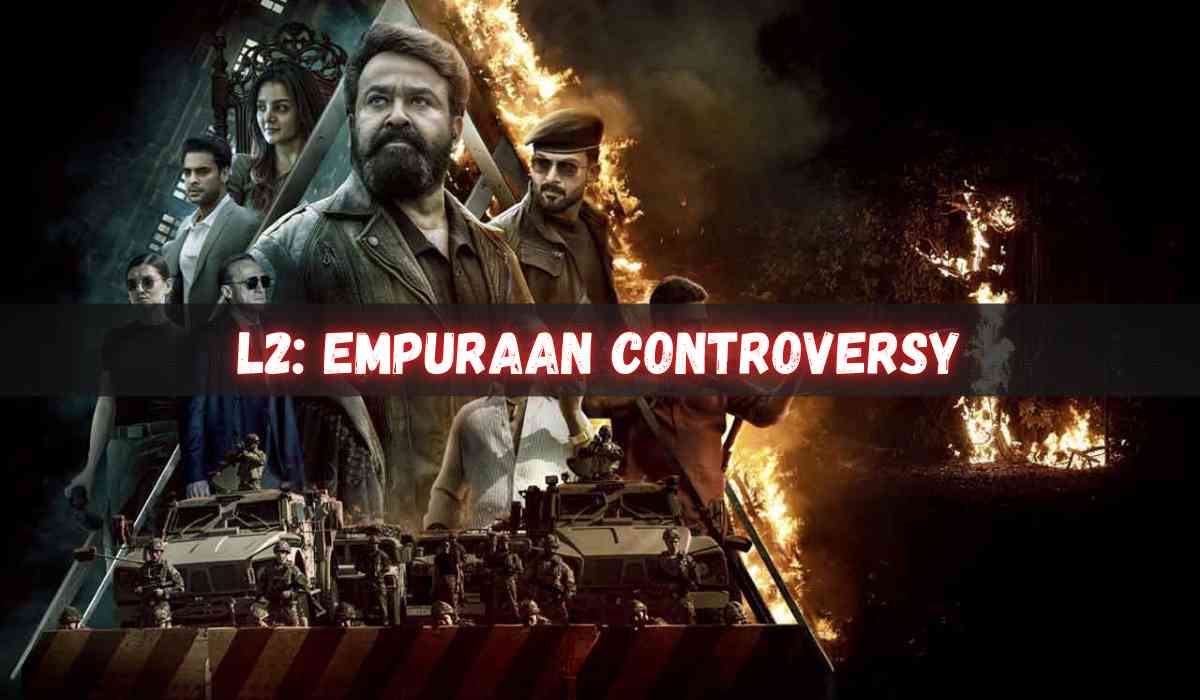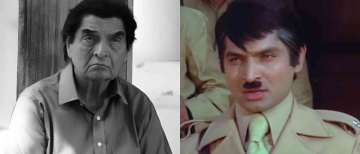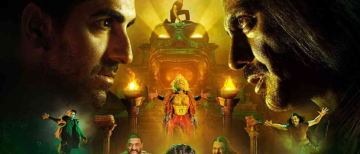The Malayalam film L2: Empuraan, a political thriller directed by Prithviraj Sukumaran and starring Mohanlal, has become the center of a nationwide storm. Launched as a sequel to the 2019 blockbuster Lucifer, Empuraan was expected to elevate its predecessor’s political intrigue and action. Instead, it ignited one of the most divisive film controversies in recent Indian cinematic history.
At the heart of the uproar is the film’s alleged depiction of the 2002 Gujarat riots, its perceived anti-Hindu and anti-government narrative, and its portrayal of national security agencies. While some hail it as a courageous portrayal of historical violence and political complexity, others condemn it as dangerous propaganda.

The Spark: A Flashback to 2002
The controversy primarily revolves around Empuraan’s 17-minute-long flashback sequence that forms the emotional core of the film’s character Zayed Masood (played by Prithviraj Sukumaran). The scene portrays:
-
A violent mob hacking Zayed’s brother to death
-
A Hindu woman (mausi) offering refuge to Muslim families
-
Her subsequent murder by Hindu rioters led by a character named Balraj
-
A massacre that wipes out Zayed’s family, sparing only him
Though never explicitly named, the year “2002 – India” flashes onscreen. Coupled with visual cues—like a burning train resembling the Sabarmati Express and montages of newspaper clippings about the Gujarat riots—the allusion is clear.
Adding fuel to the fire, the antagonist Balraj is later referred to as Baba Bajrangi, the real-life name of a convicted Gujarat riots perpetrator and former Bajrang Dal leader. Critics also noted that the rape and murder of a pregnant woman in the film eerily parallels the heinous crimes committed during the Naroda Patiya massacre.
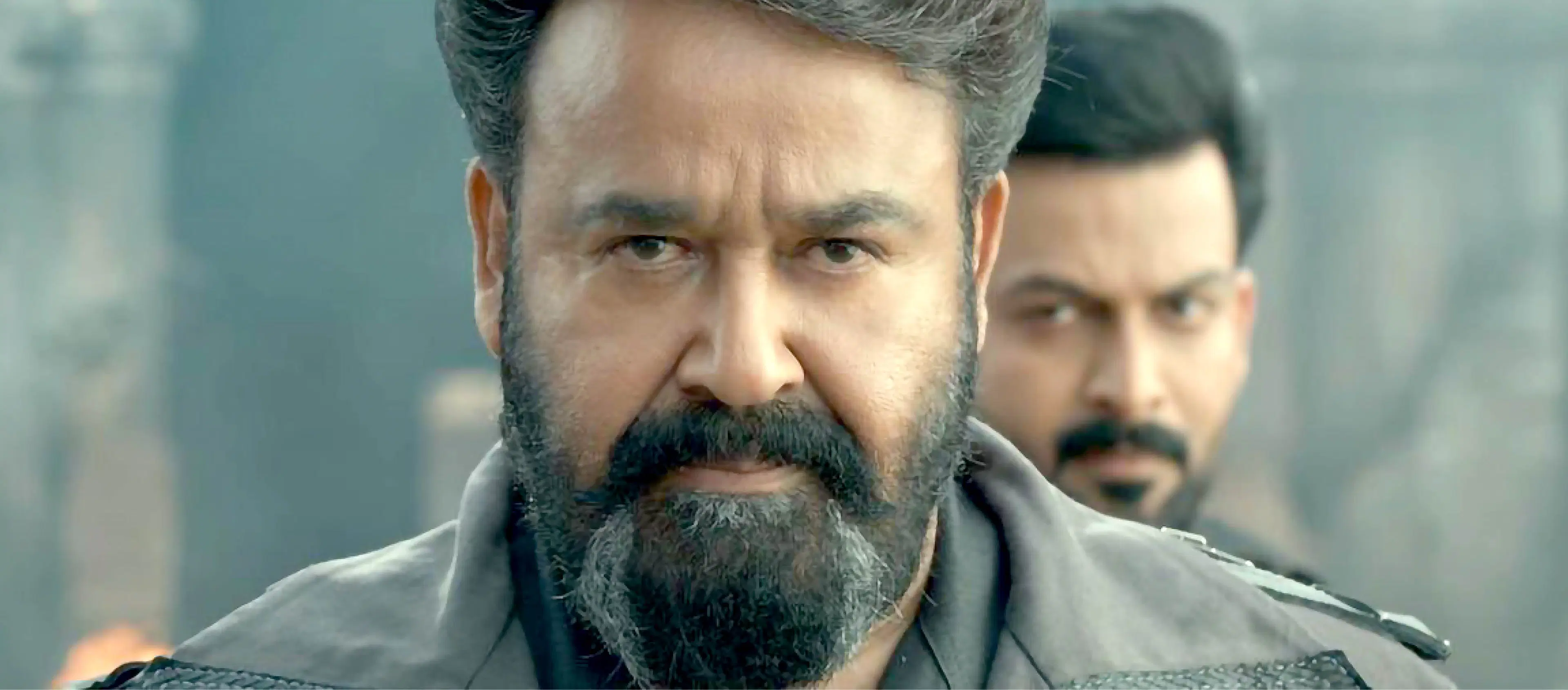
Political Blowback: Right-Wing Outrage and Film Cuts
Right-wing groups, including affiliates of the Rashtriya Swayamsevak Sangh (RSS), condemned the film for:
-
Depicting Hindus as aggressors while ignoring the Godhra train burning.
-
Glorifying Islamist extremism and promoting communal division.
-
Misrepresenting national security agencies like the NIA and IB
-
Encouraging anti-government sentiments through violent revenge arcs
Under pressure, the filmmakers voluntarily made 27 cuts totaling 128 seconds. Key changes included:
-
Renaming “Balraj” to “Baldev” in key scenes.
-
Replacing “2002 – India” with “A few years ago.”
-
Trimming riot visuals and removing scenes showing a temple
-
Deleting a 29-second scene of violence against women
-
Muting references to the National Investigation Agency (NIA)
-
Removing the “thanks” credits to actor-politician Suresh Gopi and IRS officer Jyothis Mohan
Mohanlal also issued a public apology via Facebook, expressing regret for any distress caused by the film.
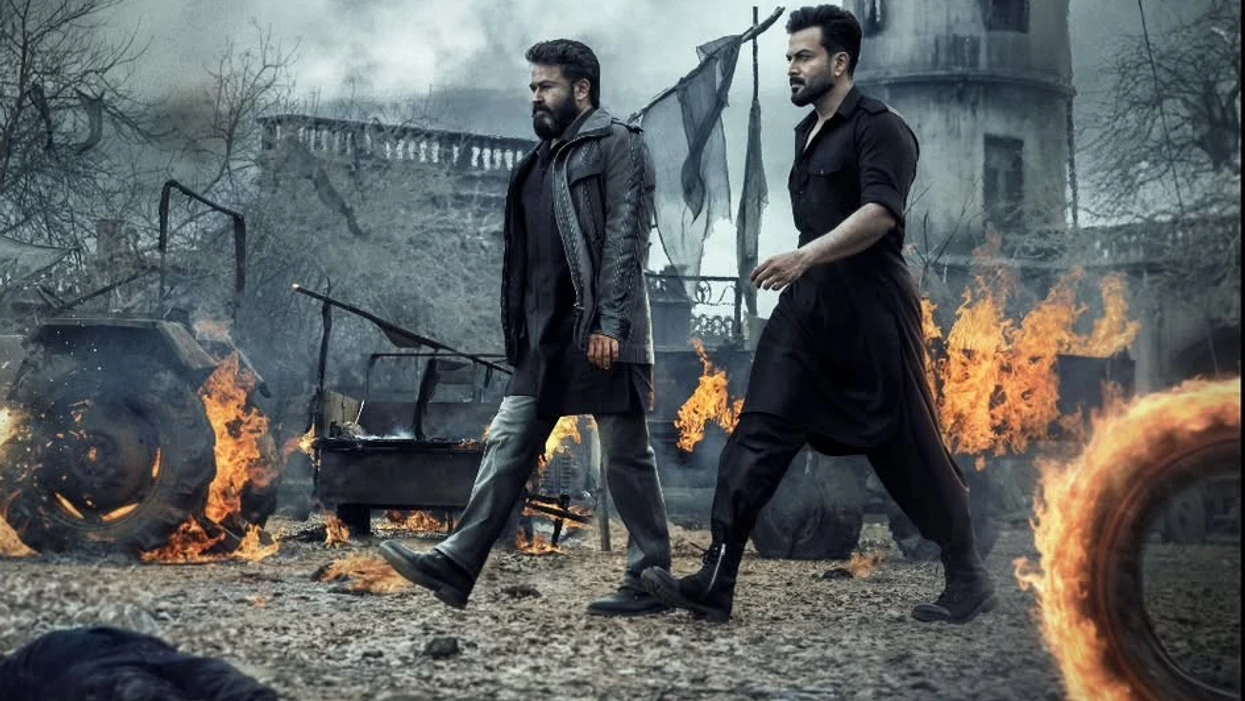
The Kerala BJP’s Surprising Response
In a twist, the Kerala unit of the BJP took a measured and restrained stance, marking a stark contrast to its usual hardline approach in similar national issues.
What happened:
-
Vijesh, a local BJP member from Thrissur, filed a petition in the Kerala High Court to ban the film, citing potential for communal unrest.
-
The Kerala High Court dismissed the plea, citing lack of evidence linking the film to real-world violence.
-
The BJP suspended Vijesh for filing the petition without party authorization.
Senior leaders like:
-
Union Minister Rajeev Chandrasekhar criticized the film’s execution but did not call for a ban
-
Suresh Gopi, BJP’s first Lok Sabha MP from Kerala, dismissed the entire row as “all business playing with people’s psyche”
Why the restraint?
Kerala’s unique demographics (Hindus 54.7%, Muslims 26.5%, Christians 18.3%) and its progressive political culture mean aggressive Hindutva politics doesn't resonate. BJP’s Kerala strategy now involves balancing Hindutva with mainstream appeal—especially before the 2026 Assembly elections.
_1744046660.webp)
Cultural Criticism: Patterns in Malayalam Cinema?
Many critics see Empuraan not as an isolated case but as part of a disturbing trend in Malayalam (and to some extent Tamil) cinema. Several films have been flagged for:
-
Glorifying terrorism and revenge
-
Demonizing Indian security forces
-
Romanticizing Maoism and Islamic-Communist extremism
-
Normalizing drug use and anti-social behavior
Examples cited:
-
Unda – accused of Maoist glorification
-
Mumbai Police and Bheeshma Parvam – show violence against naval officers
-
Bheeshma Parvam – includes scenes glamorizing drug use
-
Media also highlighted a 2022 drug bust at an apartment owned by Prithviraj Sukumaran, involving an associate caught with cocaine, LSD, and ganja
These incidents feed into a narrative pushed by right-wing critics that “a new genre of anti-national, divisive cinema” is emerging from Kerala.
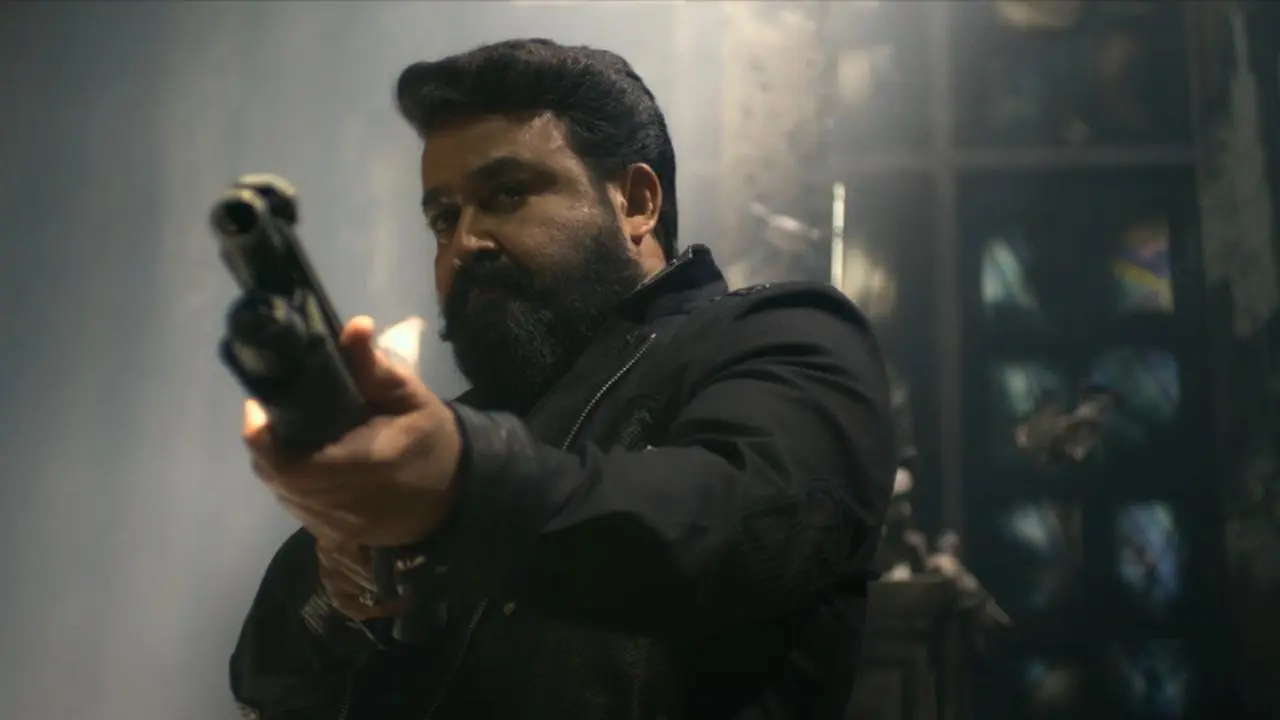
A Cinematic Dilemma: Freedom of Expression vs Responsible Storytelling
Supporters of Empuraan argue that the film should be viewed through the lens of artistic expression, not political propaganda. They claim:
-
Cinema has the right to reflect uncomfortable truths and historical tragedies.
-
It’s not about Gujarat per se, but a symbolic portrayal of communal trauma
-
The film reflects societal rot, political corruption, and institutional bias
-
Fictional storytelling should not be equated with incitement.
-
Suppressing controversial films threatens democratic values and artistic freedom.
However, critics maintain that:
-
The narrative is selective, showing only Muslim suffering. Selective historical depictions can inflame communal tensions.
-
It omits Hindu victims from Godhra and subsequent violence
-
It romanticizes violent revenge, risking real-world radicalization
-
National symbols and institutions should be treated with respect in mainstream cinema.
This clash exposes a wider debate in Indian society: How far can fiction go in reimagining or reinterpreting real trauma and communal strife?
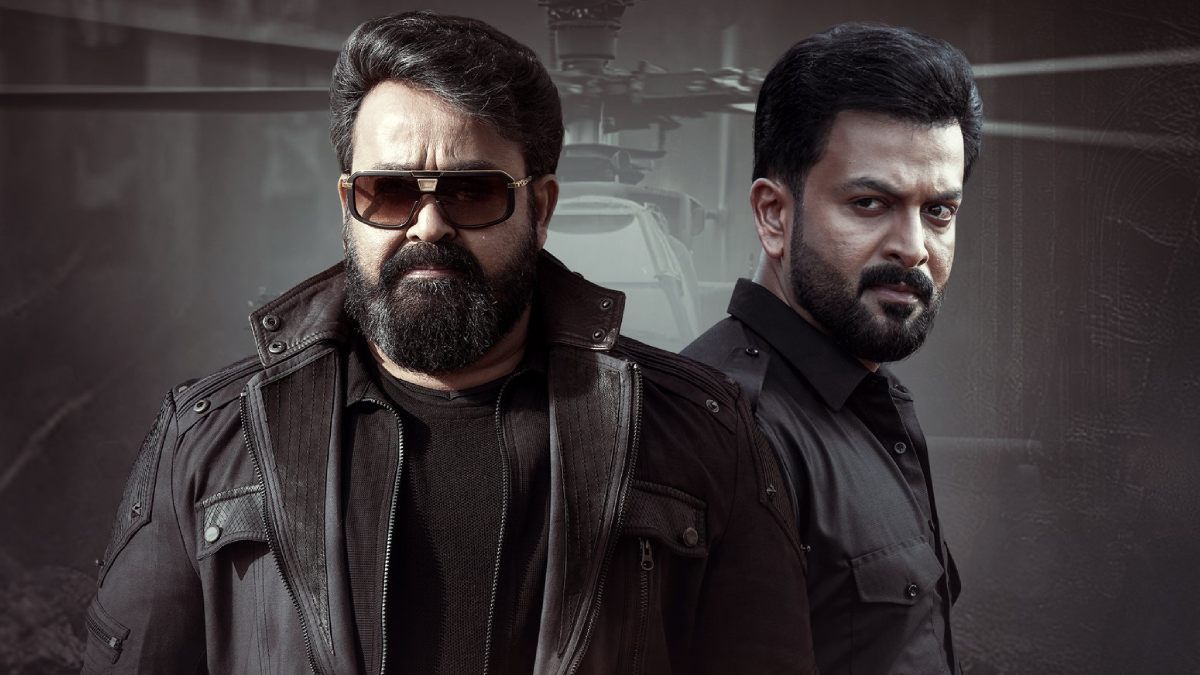
A Lens into a Larger Battle
The L2: Empuraan controversy is not just about one movie. It’s a microcosm of India’s broader cultural war, fought on screens, in courts, and on social media. It pits freedom of expression against ideological sensitivities, and cinematic imagination against political boundaries.
Whether seen as a bold artistic statement or reckless provocation, Empuraan has undeniably forced Malayalam cinema—and Indian cinema at large—into a moment of introspection.
The Gujarat riots, even 23 years later, remain a volatile and deeply emotional subject. And Empuraan proves that when you retell history, especially in a fictional format, you don’t just risk criticism—you reignite unresolved wounds.
With inputs from agencies
Image Source: Multiple agencies
© Copyright 2025. All Rights Reserved Powered by Vygr Media.

